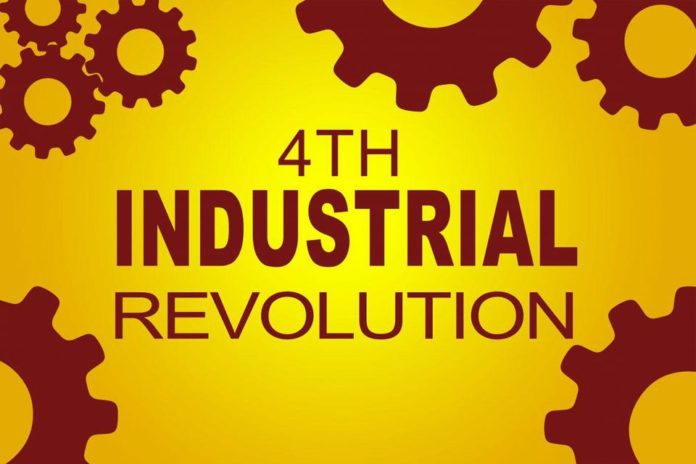
Human beings have always been reliant on technology. Of course, the technology of each era may not be the same shape and size as it is today, but it was something that shaped the lives of people.
People would always use the technology at their disposal to make their lives easier while also trying to perfect it and take it to the next level. This is where the concept of the industrial revolution got its beginning. We are currently experiencing the fourth industrial revolution, also known as Industry 4.0.
The first Industrial Revolution began in 1765
The proto-industrialization period was followed by the first industrial revolution. It lasted from the late 18th century to the beginning of the 19th. The most significant changes occurred in the industries as a result of mechanization. Agriculture began to be replaced as the backbone of the societal economy by industry as a result of mechanization.
People were witnessing massive coal extraction at the time, as well as the significant invention of the steam engine, which created a new type of energy that later helped speed up the manufacturing of railroads, thus accelerating the economy.
The Second Industrial Revolution began in 1870
Almost a century after the first Industrial Revolution, the world is witnessing the second. It began at the end of the nineteenth century, with massive technological advancements in industries that aided in the development of a new source of energy—electricity, gas, and oil.
This revolution resulted in the development of the internal combustion engine, which began to realize its full potential. Other significant aspects of the second industrial revolution included the growth of steel demand, chemical synthesis, and communication methods such as the telegraph and telephone.
Finally, the inventions of the automobile and the aeroplane at the turn of the twentieth century are the reason why the Second Industrial Revolution is still regarded as the most important!
The Third Industrial Revolution began in 1969
Another century has passed, and the Third Industrial Revolution has begun. In the second half of the twentieth century, we see the emergence of yet another untapped source of energy at the time, Nuclear energy!
The third industrial revolution saw the rise of electronics, telecommunications, and, of course, computers. Through new technologies, the third industrial revolution enabled space exploration, research, and biotechnology.
In the industrial world, two major inventions, Programmable Logic Controllers (PLCs) and Robots, contributed to the emergence of an era of high-level automation.
Fourth Industrial Revolution, or Industry 4.0
The term “Fourth Industrial Revolution” was coined by a group of scientists working on a high-tech strategy for the German government. In a 2015 article published by Foreign Affairs, Klaus Schwab, executive chairman of the World Economic Forum (WEF), popularized the phrase. The 2016 World Economic Forum Annual Meeting in Davos-Klosters, Switzerland, had the theme “Mastering the Fourth Industrial Revolution.”
Many people consider Industry 4.0 to be the fourth Industrial Revolution. If we consider Industry 4.0 to be a revolution, we must acknowledge that it is taking place right now. We are witnessing it on a daily basis, and its scope is still unknown.
The Internet, which everyone uses every day, was the catalyst for Industry 4.0 at the turn of the third millennium. We can see the transition from the first industrial revolution, which was based on technological phenomena, to Industry 4.0, which is based on virtual reality worlds and allows us to bend the laws of physics.
The world today is shaped by the Fourth Industrial Revolution. They are the foundation of global economies. Worldwide, programs and projects are being implemented to assist people in taking advantage of the wonders of the fourth revolution in their daily lives.
What truly distinguishes Industry 4.0 technologies is the innovative way in which hardware, software, and connectivity are reconfigured and integrated to achieve ever-higher goals, the collection and analysis of massive amounts of data, the seamless interaction of smart machines, and the blurring of the physical and virtual dimensions of production. Sensors, for example, could detect specific actions or process durations, as well as ambient conditions such as temperature, allowing for independent self-correction based on ‘big data’ and artificial intelligence insights (AI). These data points could also be fed into the system in real time in order to adjust and optimize downstream stages of the manufacturing process, reducing downtime and freeing up resources.
Proponents of the Fourth Industrial Revolution argue that it is a distinct revolution, not simply a continuation of the Third Industrial Revolution. This is due to the following features:
- Velocity — the rate at which incumbent industries are affected and displaced at an exponential rate[6].
- Scope and system impact – the large number of sectors and firms affected[6].
- A paradigm shift in technology policy has occurred, with new policies in place to support this new way of doing things. Singapore’s formal recognition of Industry 4.0 in its innovation policies is one example.
The Fourth Industrial Revolution is made possible by various factors:
- Mobile phones
- Platforms for the Internet of Things (IoT)
- Location-based technologies (electronic identification)
- Cutting-edge human-machine interfaces
- Authentication and detection of fraud
- Intelligent sensors
- Big data analytics and cutting-edge processes
- Multi-tiered customer interaction and profiling
- Wearables and augmented reality
- On-demand access to computer system resources
- Data visualization and “live” training that follows
- Combination of various technologies like nanotechnology, biotechnology, information technology, etc.
The fourth industrial revolution will bring about unimaginable changes in our lives over the next decade. It will have an impact on how we perceive ourselves and the world. It will fundamentally alter our way of life and being! Philosophy, religion and even spirituality will have to respond creatively to the unpredictability and advantages it brings.
Kuruvilla Joseph Pandikattu SJ (kuru@jdv.edu.in



